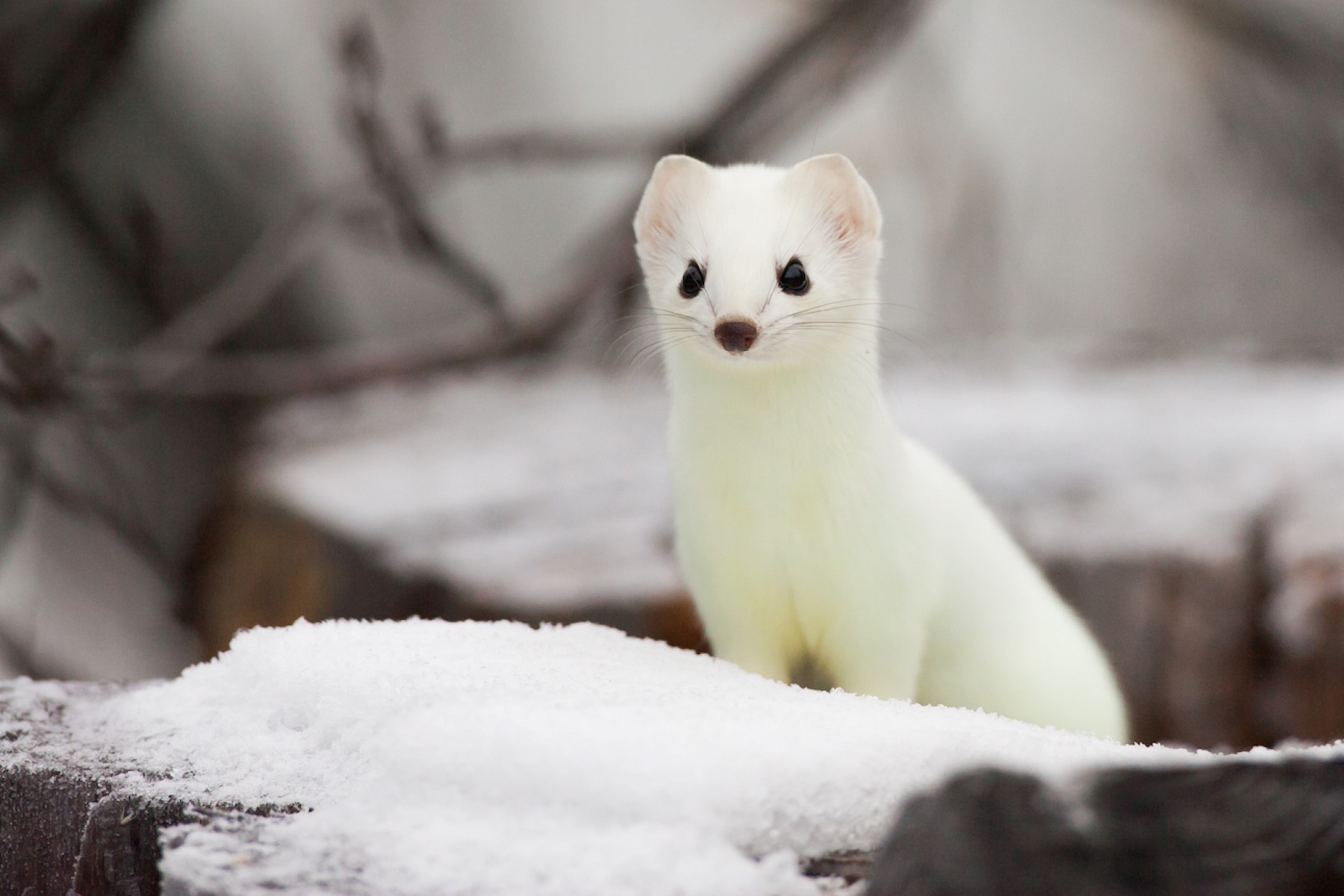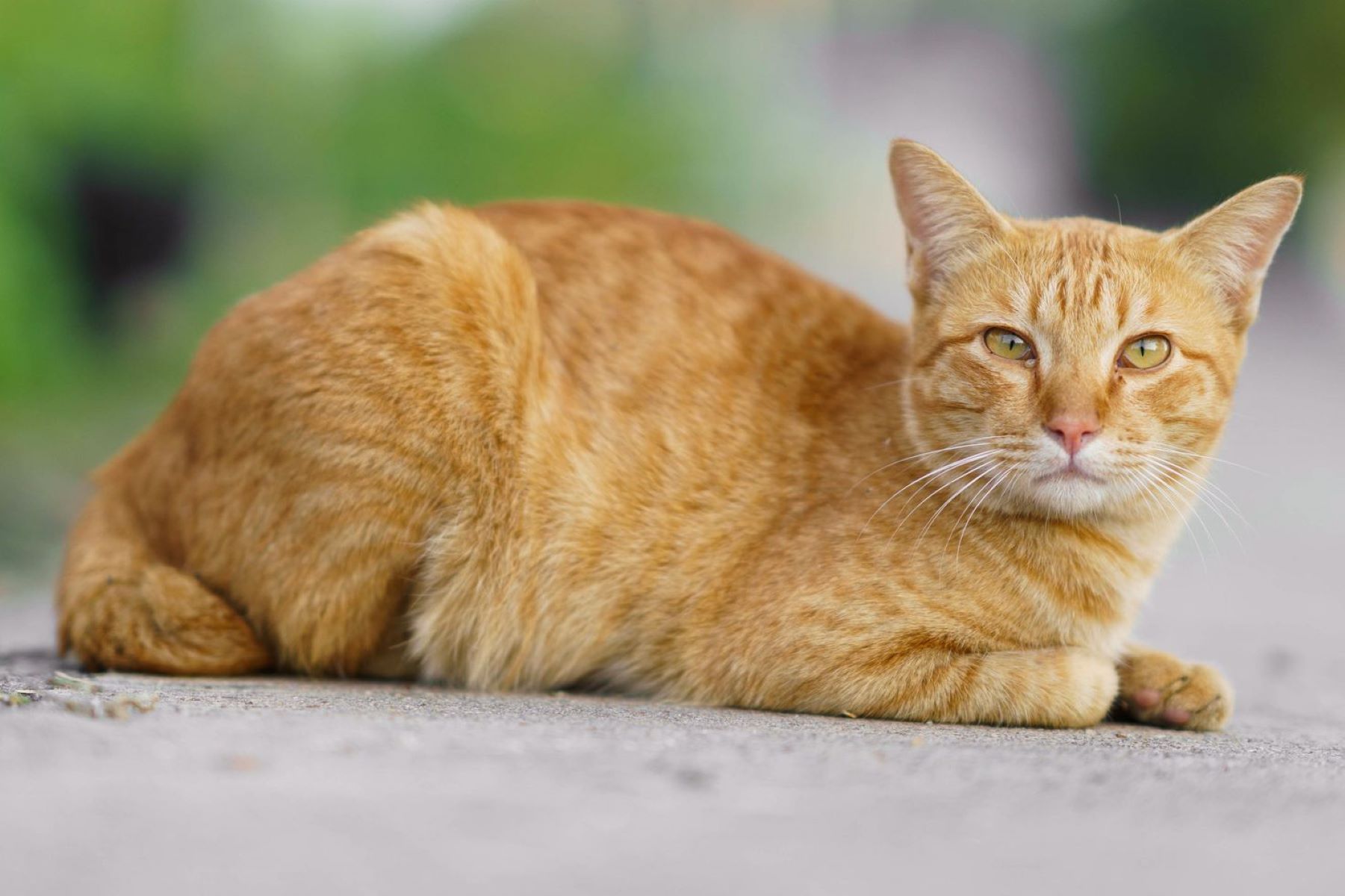Home>Science>Animals With White Fur In Winter: A Stunning Transformation!


Science
Animals With White Fur In Winter: A Stunning Transformation!
Published: February 6, 2024
Discover the fascinating science behind animals' stunning transformation with white fur in winter. Explore the incredible ways these creatures adapt to their snowy surroundings. Learn more about this captivating natural phenomenon!
(Many of the links in this article redirect to a specific reviewed product. Your purchase of these products through affiliate links helps to generate commission for Regretless.com, at no extra cost. Learn more)
Table of Contents
Introduction
The winter landscape, blanketed in pristine white snow, is a sight to behold. Amidst this wintry wonderland, certain animals undergo a fascinating transformation, donning a coat of white fur that seamlessly blends with the snow-covered terrain. This natural phenomenon, often overlooked, is a remarkable display of adaptation and survival in the animal kingdom.
As temperatures plummet and the earth is veiled in snow, the ability of these creatures to change the color of their fur becomes a vital strategy for concealment and protection. This adaptation not only showcases the ingenuity of nature but also offers a glimpse into the intricate science behind this striking metamorphosis.
In this article, we delve into the captivating world of animals with white fur in winter, exploring the scientific mechanisms that drive this transformation and the diverse range of species that undergo this remarkable change. From the Arctic fox to the snowshoe hare, these creatures undergo a stunning metamorphosis, showcasing the awe-inspiring ways in which they adapt to their ever-changing environment.
Join us as we unravel the secrets behind this natural phenomenon and gain a deeper understanding of the intricate relationship between these animals and their winter surroundings. Prepare to be captivated by the remarkable stories of adaptation and survival that unfold in the animal kingdom during the winter months.
The Science Behind White Fur in Winter
The transformation of animals' fur to a snowy white coat during winter is a captivating display of natural adaptation driven by intricate biological processes. This phenomenon is primarily governed by the animals' inherent ability to adjust their fur color in response to seasonal changes, a remarkable feat achieved through a combination of genetic, hormonal, and environmental factors.
At the core of this transformation lies a biological process known as molting, which involves the shedding and regrowth of fur. In preparation for the winter season, certain animals, such as the Arctic fox and the snowshoe hare, undergo a molting process that results in the replacement of their brown or gray fur with a pristine white coat. This transformation is orchestrated by the animals' genetic makeup, which triggers the production of specialized cells responsible for the pigmentation of their fur.
The key players in this color-changing process are melanocytes, the pigment-producing cells found in the animals' skin and hair follicles. These cells are equipped with the remarkable ability to alter the production of melanin, the pigment responsible for fur coloration. During winter, as the days grow shorter and the landscape becomes cloaked in snow, the animals' bodies respond to the changes in daylight duration and ambient temperature. This triggers a hormonal cascade that prompts the melanocytes to decrease the production of melanin, resulting in the gradual whitening of the animals' fur.
Furthermore, the animals' fur undergoes a physical transformation to enhance its insulating properties during winter. The dense, white coat not only provides camouflage in the snowy terrain but also acts as an effective thermal barrier, shielding the animals from the harsh cold. The air trapped within the fur's structure serves as a natural insulator, enabling the animals to retain body heat and survive the frigid temperatures of their winter habitat.
The remarkable science behind the transformation of animals' fur to a winter-white hue is a testament to the intricate interplay between genetics, hormonal regulation, and environmental cues. This captivating display of adaptation showcases the remarkable ways in which these creatures have evolved to thrive in their ever-changing surroundings, offering a glimpse into the awe-inspiring complexity of the natural world.
In the subsequent sections, we will delve into the diverse array of animals that undergo this striking transformation, unraveling the captivating stories of survival and resilience that unfold in the winter wilderness. Join us as we embark on a journey to discover the extraordinary world of animals with white fur in winter, where science and nature converge in a mesmerizing display of adaptation and ingenuity.
Animals That Change Color in Winter
The natural world is replete with a diverse array of creatures that undergo a remarkable transformation, donning a coat of white fur as winter descends upon their habitats. Among these fascinating animals, the Arctic fox stands out as a prime example of this stunning metamorphosis. Renowned for its mesmerizing ability to change its fur color from brown or gray to a brilliant white, the Arctic fox seamlessly blends with the snow-covered terrain, evading predators and stealthily pursuing its prey.
Another notable species that undergoes a striking color change in winter is the snowshoe hare. This remarkable creature, adorned with a coat of brown fur during the warmer months, undergoes a remarkable transformation as winter sets in. Its fur transitions to a snowy white hue, providing the hare with effective camouflage amidst the wintry landscape. This adaptive color change enables the snowshoe hare to navigate its surroundings with unparalleled stealth, evading detection from predators and ensuring its survival in the harsh winter wilderness.
In addition to the Arctic fox and the snowshoe hare, several other animals exhibit a similar ability to change their fur color in response to seasonal shifts. The stoat, also known as the ermine, undergoes a striking transformation, exchanging its brown coat for a pristine white ensemble as winter approaches. This remarkable change not only serves as a means of concealment but also enhances the stoat's ability to maneuver through its snowy habitat undetected, exemplifying nature's ingenious strategies for survival.
Furthermore, the ptarmigan, a remarkable bird species found in Arctic and subarctic regions, undergoes a captivating transformation as winter unfolds. Its plumage, which is predominantly brown during the warmer months, transitions to a dazzling white, allowing the bird to blend seamlessly with the snow-covered landscape. This adaptive color change not only provides the ptarmigan with camouflage but also offers protection from predators, showcasing the remarkable ways in which these creatures have evolved to thrive in their winter habitats.
The diverse range of animals that undergo a color change in winter exemplifies the awe-inspiring ways in which these creatures adapt to the seasonal shifts in their environment. From the Arctic fox to the stoat and the ptarmigan, these remarkable transformations offer a captivating glimpse into the intricate interplay between biology, environment, and survival. As we continue to unravel the stories of these remarkable creatures, we gain a deeper appreciation for the remarkable adaptations that unfold in the winter wilderness, showcasing the remarkable resilience and ingenuity of the animal kingdom.
Camouflage and Survival
The striking transformation of animals' fur to a winter-white hue serves as a powerful mechanism for camouflage, enabling these creatures to seamlessly blend into their snow-covered surroundings. This adaptive color change plays a pivotal role in their survival, allowing them to evade predators and stealthily pursue their prey amidst the wintry wilderness.
Camouflage, a cornerstone of survival in the animal kingdom, is a remarkable strategy that enables animals to conceal themselves from potential threats, thereby increasing their chances of survival. The ability to blend seamlessly with the environment affords these creatures a crucial advantage, allowing them to remain undetected by predators and ensuring their continued existence in the harsh winter landscape.
In the context of winter, the transformation of animals' fur to a pristine white coat represents an unparalleled form of camouflage. The snowy terrain provides the perfect backdrop for this adaptive color change, allowing the animals to virtually disappear from sight as they navigate their wintry habitats. This remarkable feat of camouflage not only aids in evading predators but also enhances the animals' hunting prowess, enabling them to approach their prey with stealth and precision.
Moreover, the ability to change fur color in response to seasonal shifts exemplifies the remarkable adaptability of these creatures. This natural camouflage not only serves as a means of concealment but also reflects the animals' innate ability to thrive in their ever-changing environment. It is a testament to the intricate interplay between biology and environment, showcasing the awe-inspiring ways in which these creatures have evolved to overcome the challenges posed by their winter surroundings.
The significance of camouflage in the context of survival cannot be overstated. For the Arctic fox, snowshoe hare, stoat, and ptarmigan, the ability to blend seamlessly with the snow-covered landscape is a matter of life and death. It enables them to elude predators, such as wolves, lynxes, and birds of prey, while also enhancing their hunting efficiency in the unforgiving winter wilderness.
As we marvel at the captivating transformation of these animals' fur, we gain a profound appreciation for the pivotal role that camouflage plays in their survival. It is a testament to the remarkable strategies that have evolved in the natural world, showcasing the extraordinary ways in which these creatures have adapted to the challenges of their winter habitats. Through the lens of camouflage and survival, we witness the unparalleled resilience and ingenuity of the animal kingdom, where adaptation is the key to thriving amidst the ever-changing tapestry of nature.
The Impact of Climate Change
The phenomenon of animals changing their fur color in winter, particularly to blend with snowy surroundings, is intricately linked to the environmental cues of their habitats. However, as the specter of climate change looms over the natural world, this remarkable adaptation faces unprecedented challenges.
Rapid shifts in temperature, altered precipitation patterns, and diminishing snow cover have disrupted the delicate balance of the winter ecosystem. These changes pose significant consequences for the animals that rely on their winter-white fur for survival. As snow cover becomes less predictable and more sporadic in many regions, the window of opportunity for effective camouflage diminishes, leaving these creatures vulnerable to predation.
Furthermore, the mismatch between the timing of seasonal color change and the availability of snow cover can have profound implications for the survival of these animals. In instances where the transition to a white coat occurs before the landscape is blanketed in snow, the animals are left conspicuously exposed, making them easy targets for predators. Conversely, delayed snow cover may render the animals' white fur ineffective as a camouflage, undermining their ability to evade detection.
The repercussions of climate change extend beyond the immediate challenges of camouflage. As the winter landscape undergoes rapid transformations, the availability of food sources and the dynamics of predator-prey relationships are also profoundly impacted. Disrupted snow and ice patterns can alter the accessibility of food for herbivores, triggering cascading effects throughout the food chain. Consequently, the survival of species that rely on their winter-white fur for camouflage becomes intricately intertwined with the broader ecological shifts driven by climate change.
In the face of these challenges, the resilience of these animals is put to the test. Their ability to adapt to the rapidly changing dynamics of their winter habitats will determine their continued existence in the face of mounting environmental pressures. As the impact of climate change reverberates through the natural world, the remarkable stories of adaptation and survival in the animal kingdom unfold against a backdrop of unprecedented challenges, underscoring the profound interconnectedness of all life forms in the face of environmental upheaval.
Conclusion
The captivating transformation of animals with white fur in winter unveils a mesmerizing tapestry of adaptation, survival, and resilience in the natural world. From the Arctic fox to the snowshoe hare, these remarkable creatures undergo a stunning metamorphosis, donning a coat of winter-white fur that seamlessly blends with their snow-covered habitats. This striking display of color change is orchestrated by a symphony of biological processes, driven by genetic, hormonal, and environmental factors that converge to create a seamless blend of science and nature.
As we journey through the intricate science behind this transformation, we gain a profound appreciation for the remarkable strategies that have evolved in the animal kingdom. The ability to adjust fur coloration in response to seasonal shifts is a testament to the ingenuity of nature, showcasing the awe-inspiring ways in which these creatures have adapted to thrive in their ever-changing environments.
Moreover, the significance of camouflage in the context of survival cannot be overstated. The winter-white fur serves as a powerful mechanism for concealment, enabling these creatures to evade predators and stealthily pursue their prey amidst the wintry wilderness. It is a remarkable testament to the intricate interplay between biology and environment, highlighting the extraordinary ways in which these creatures have evolved to overcome the challenges posed by their winter surroundings.
However, as the specter of climate change looms over the natural world, this remarkable adaptation faces unprecedented challenges. Disrupted snow cover and altered environmental dynamics pose significant consequences for the survival of these animals, underscoring the profound interconnectedness of all life forms in the face of environmental upheaval.
In essence, the stories of animals with white fur in winter offer a poignant reflection of the delicate balance between adaptation and environmental change. As these creatures navigate the challenges of their winter habitats, they embody the resilience and ingenuity of the natural world, offering a glimpse into the remarkable ways in which life perseveres amidst the ever-changing tapestry of nature.
In closing, the captivating transformation of animals with white fur in winter serves as a poignant reminder of the intricate relationships that define the natural world. It is a testament to the enduring spirit of adaptation and survival, where science and nature converge in a mesmerizing display of resilience, offering a profound insight into the timeless dance of life amidst the ever-shifting landscapes of our planet.














